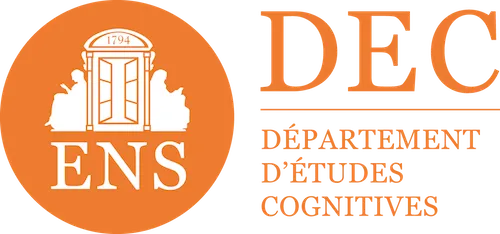

How to deploy an LMS on a large scale without compromising educational effectiveness?
Deploying a Learning Management System on a large scale represents a major challenge for companies with more than 1000 employees. This transformation involves a complete overhaul of training workflows and requires an LMS solution adapted to corporate challenges.
Between technical scalability, learner engagement and ROI measurement, training directors must navigate a complex ecosystem. How to succeed in this large-scale digital transformation without sacrificing educational effectiveness?
Why is deploying an LMS at scale so complex?
Organizational challenges specific to large structures
Scaling up is radically changing the nature of challenges. Unlike SMEs, large companies face an exponential organizational problem.
Stakeholder management is becoming a real headache. Training directors, Digital Learning managers, business experts, IT teams: each actor has its own objectives and constraints. This multiplicity of interlocutors slows down decision-making and complicates strategic alignment.
The pitfall of standardization versus personalization
Large organizations bring together extremely varied professions, skill levels, and online training needs. How to create a relevant learning experience for a salesperson, an engineer and a manager?
The temptation to overstandardize destroys learner engagement. Conversely, an overly personalized approach becomes unmanageable on a global scale. This fundamental tension explains why many LMS projects fail despite substantial budgets.
Technical and security constraints
Volumetry changes everything. An LMS platform that works perfectly with 100 users can collapse with 10,000 simultaneous connections. Large businesses require robust, redundant, and secure architectures to ensure continuity of service.
Integration with the existing ecosystem (HRIS, CRM, business tools) is becoming critical. Each additional system multiplies the risks of malfunction and maintenance costs.
What are the 6 key steps to successfully deploy LMS on a large scale?
Step 1: Diagnosis and in-depth strategic framework
Needs analysis goes beyond a simple user survey. It involves a complete mapping of skills, career paths and organizational constraints.
Precisely identify your goals: skills development, regulatory compliance, cultural transformation or optimization of training costs. This clarification determines all technical and educational choices.
Segmenting learner populations is crucial. Create detailed personas integrating business specificities, digital maturity levels, and time constraints.
Step 2: Establishment of a strengthened project team
Success is based on solid governance. Set up a steering committee combining general management, training, IT and business representatives.
Appoint a dedicated project manager with dual training and IT skills. This hybridization avoids misunderstandings between technical and educational teams.
Identify ambassadors in each department. These relays facilitate adoption and provide feedback on the ground that is essential to the adjustment of the strategy.
Step 3: Selecting a scalable platform
Technical criteria take precedence over cosmetic functionalities. Prioritize scalability, security, and interoperability.
Test the platform in real conditions with a representative sample. Commercial demonstrations often mask technical limitations under load conditions.
Step 4: Progressive and controlled deployment
Start systematically by a restricted pilot. Select 100 to 200 users who represent organizational diversity.
This pilot phase reveals invisible dysfunctions in the laboratory: network problems, software conflicts, user resistance or pedagogical inadequacy.
Meticulously document feedback and adjust before generalization. A successful pilot becomes a powerful communication tool to reassure skeptical teams.
Step 5: Massive support and training
Adoption cannot be decreed, it can be cultivated. Organize differentiated training according to profiles: administrators, trainers, learners.
Create contextual help resources and responsive support. The first few weeks determine the final opinion of users on the platform.
Communicate regularly on the concrete benefits observed. The testimonies of convinced users are worth a thousand theoretical arguments.
Step 6: Impact measurement and continuous optimization
Define precise KPIs from the start: connection rate, training time, skill progression, user satisfaction, completion rate.
Behavioral data analysis reveals effective content and areas of friction. This intelligence makes it possible to continuously optimize the learning experience.
Plan quarterly improvement cycles. A platform that does not evolve quickly becomes obsolete in the eyes of users.
How to choose a technical architecture capable of supporting thousands of users?
Technical scalability requirements
Cloud architecture is needed to manage unpredictable peak loads. An on-premise solution quickly reaches its limits in the face of the growth in uses, especially for large-scale online training.
Server redundancy and load distribution ensure continuity of service. An inaccessible learning management system instantly destroys user trust.
Choose cloud-native solutions designed for scalability. The retrospective adaptation of monolithic architectures generates exponential costs and compromises performance.
Essential features for a large-scale LMS
The user interface should make navigation intuitive even for thousands of employees. A centralized dashboard facilitates administration and makes it possible to monitor the use of the platform in real time.
The Mobile learning is becoming unavoidable. Learners access training from their smartphone while traveling. This flexibility significantly improves engagement.
Advanced content management automates updates and organizes resources efficiently. An integrated content management system allows training organizations to quickly distribute their training programs.
Security and compliance at scale
The protection of personal data is becoming critical with thousands of users. Verify GDPR compliance and vendor security certifications to ensure safety.
Single sign-on (SSO) simplifies administrative management while increasing security. Users more easily adopt a solution that is integrated into their usual environment.
The granularity of rights makes it possible to respect the complex organization charts of large companies. Each user only has access to items that are relevant to their role.
Interoperability and integrations
Integration with the HRIS automates user management and synchronizes HR data. This connection eliminates double entries that cause errors during onboarding.
Open APIs facilitate specific developments and the integration of business tools. A closed platform limits future developments and complicates migration.
The compatibility SCORM standard ensures the portability of existing content. This interoperability protects the investment in training resources and facilitates the transition.
How is Didask's educational AI transforming large-scale deployment?
Intelligent automation of content creation
Artificial Intelligence is revolutionizing the production of online training courses. Didask's educational AI automatically transforms the raw content of experts into structured and interactive training courses.
This automation solves the impossible equation: creating personalized content at scale. Business experts provide their expertise, the AI intelligently organizes the modules.
The creation time divided by 10 radically changes the economics of training. Businesses can finally update their training programs in line with business changes and quickly launch new initiatives.
Adaptive learning to personalize endlessly
Adaptive learning automatically customizes the courses according to the profile and performance of each learner. This individualization takes place without human intervention within your organization.
Kevin, a salesman, discovers the fight against corruption through negotiation dilemmas. Marie, HR, explores the same concepts through recruitment situations. Same training, different experiences adapted to each business point of view.
This automatic customization solves the standardization/customization tension that paralyzes large deployments and makes it possible to meet the specific needs of each employee.
The AI assistant as a personal tutor on a large scale
The AI assistant accompanies each learner individually: course recommendations, personalized explanations, practical training. This function is revolutionizing traditional support.
This approach reproduces the benefits of one-on-one mentoring while remaining economically viable on a large scale. AI serves as a personal tutor for each employee, available 24/7.
Cognitive science guides these interactions to maximize the retention and transfer of learning. Educational effectiveness is no longer sacrificed on the altar of economy of scale.
How have large companies succeeded in their digital learning transformation?
The key success factors observed
Successful deployments share common characteristics. The involvement of senior management signals the strategic importance of the project to the entire organization and facilitates the consideration of training issues.
Transparent communication about goals and expected benefits facilitates adherence. Employees understand the personal interest in engaging in this transformation to collaborative learning.
Change management is not limited to technical training. It encompasses the transformation of managerial practices and HR processes to integrate the new approach harmoniously.
The importance of technological choice
Successful businesses prioritize educational innovation over gadget features. They choose solutions based on cognitive science rather than on fashion effects such as simple gamification.
BNP, Canal+, L'Oréal, Orange and even PwC trusted Didask for their large-scale face-to-face training and blended learning challenges. These references attest to the maturity of the solution in the face of corporate requirements.
The speed of creating content is becoming a competitive advantage. Agile companies adapt their training to the pace of market changes and can quickly test new approaches.
ROI measurement and advanced analytics
Successful deployments rely on rigorous measurement of return on investment. Beyond usage metrics, they assess the impact on skills and performance with detailed dashboards.
The granularity of analytics makes it possible to identify the most effective resources and to continuously optimize the training offer. This data-driven approach transforms the formation of a cost center into a performance driver.
The continuous evaluation of programs makes it possible to quickly adjust the strategy and measure the real impact on employee skills. This feedback loop ensures long-term effectiveness.
What are the fatal mistakes to avoid during an LMS deployment?
The completely technical error
Many companies reduce the LMS project to its technical aspects. This narrow vision neglects the human and organizational dimensions that are crucial for successful implementation.
An LMS is not a software but an ecosystem. Its success depends as much on learner commitment as on technical robustness. The best solution on the market fails without appropriate support.
Integrate the challenges of change management and user support from the start. These investments determine long-term success and reduce internal resistance.
Underestimating content needs
Deploying an empty training platform is equivalent to an announced failure. The creation of engaging and effective content represents 60% of the total effort and determines the learning experience.
Businesses are discovering too late that their business experts don't know how to create online training courses. This pedagogical skill cannot be improvised and requires adapted tools.
Choose a solution that offers quick and intuitive creation tools. Didask's educational AI allows experts to focus on their know-how without worrying about complex didactics.
The over-customization trap
The temptation to replicate existing processes identically leads to specific developments that are expensive and fragile. This approach generates additional months of development.
Agree to change your practices to benefit from market standards. This adaptation makes it easier to update and reduces long-term maintenance costs.
Intelligent standardization does not deplete the user experience. It makes it more fluid by relying on ergonomic conventions tested by other organizations.
The oversight of post-launch planning
It's impossible to optimize what you don't measure. The absence of performance indicators condemns the project to permanent approximation and prevents any optimization.
Define accurate KPIs before launch and set up the necessary measurement tools. This objective approach facilitates arbitrations and justifies investments to management.
Plan update and upgrade cycles from the start. A fixed system quickly loses its interest and no longer meets the new needs that emerge.
Conclusion: towards a successful transformation of training on a large scale
Deploying an LMS on a large scale requires expertise, method and support to ensure its success.
Companies that succeed in this transformation rely on three pillars: a rigorous methodological approach, an innovative technological solution and quality human support. Educational Artificial Intelligence is revolutionizing this equation by finally making it possible to reconcile personalization and massive deployment.
At Didask, we support large companies in this transformation thanks to our unique expertise combining cognitive science and educational AI. Our references - BNP, Canal+, L'Oréal, L'Oréal, Orange, PwC - demonstrate our ability to meet the most complex challenges and to offer the best solution adapted to each context.
Our platform makes it possible to quickly create engaging courses, automate personalization, and accurately measure impact. This advanced approach transforms your training challenges into a sustainable competitive advantage.
Make an appointment directly with our eLearning experts for a demo or simply more information.












